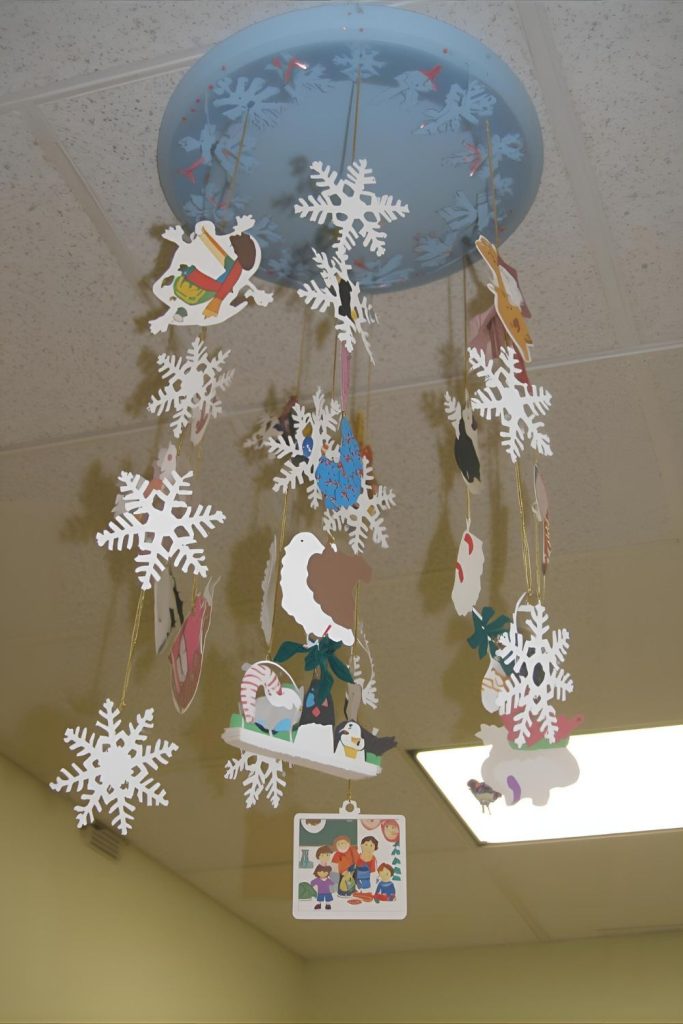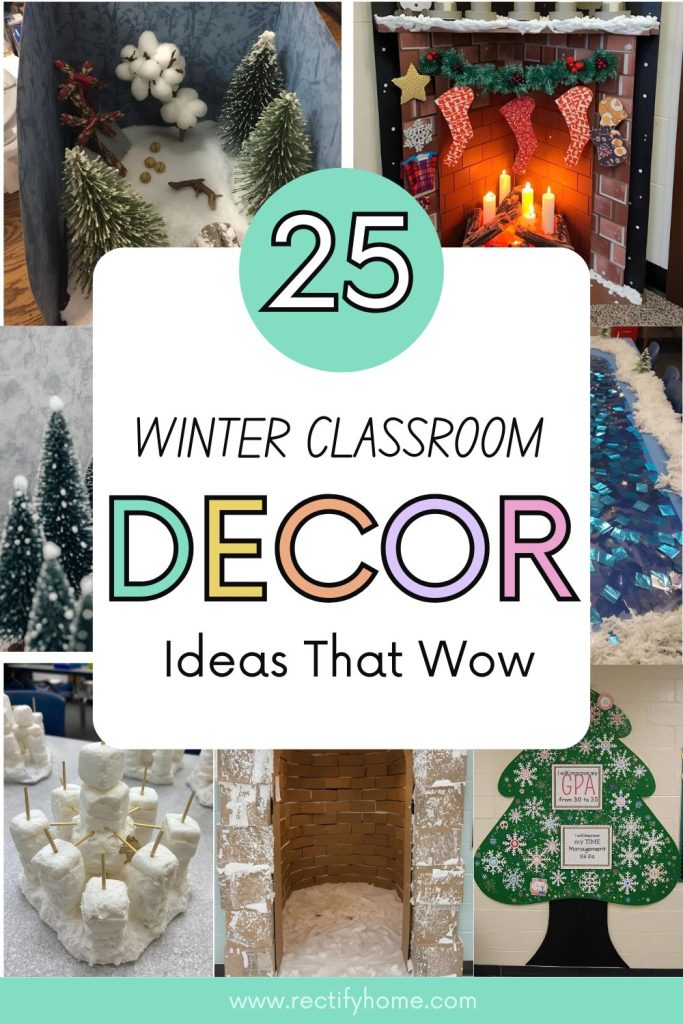
Winter in the classroom can feel cold and long if the environment is left plain, but with thoughtful winter classroom decorations, the space can come alive, spark curiosity, and even bring laughter. These decorations can help students feel more comfortable, inspired, and ready to participate, while also giving teachers a chance to create a joyful and welcoming learning environment.
The right decorations not only reflect the seasonal magic but can also be used to reinforce lessons, build classroom community, and encourage creativity. From paper snowflakes to interactive dioramas, winter classroom decorations offer opportunities to connect fun with learning in ways that leave lasting memories. In this guide, you’ll find ideas and insights for designing a classroom that is both cheerful and educational, showing how small touches can create big effects.
How can winter classroom decorations be thoughtfully designed to inspire both learning and laughter?
Winter classroom decorations can become more than just visual appeal; they can foster playful learning and humor.
For example, hanging paper snowflakes with student-written jokes or math riddles encourages interaction while keeping the classroom cheerful.
Using thematic displays like snowmen with quirky captions, penguins performing silly “science experiments,” or cotton ball polar bears with funny speech bubbles can combine seasonal imagery with learning points.
By integrating educational elements, students see the decorations as part of the lesson rather than distractions. Laughter emerges naturally when students engage with the content, whether it’s through spotting hidden words in a snowflake wall or reading playful puns about winter animals.
Teachers can strategically place decorations near workstations or reading corners to encourage students to pause, think, and smile. When students are invited to contribute jokes, facts, or creative captions, the sense of ownership grows, making the classroom more lively.
Thoughtful designs balance visual stimulation with learning opportunities, and when humor is included, students are more likely to retain concepts and participate actively.
Even small touches like funny polar bear facts or snowball math games can help students associate learning with enjoyment.
Ultimately, decorating with intention makes the classroom feel alive, approachable, and fun while subtly reinforcing lessons, which is the goal of any educational space.
How can winter classroom decorations enhance curiosity and critical thinking?
Decorations can be interactive prompts that challenge students to notice patterns, ask questions, and solve problems.
For instance, a winter-themed math corner with snowflake addition or subtraction problems encourages children to think critically while interacting with the decor. Labels on penguins, polar bears, or snow globes can include interesting facts or open-ended questions that prompt discussion, such as “Why do polar bears have thick fur?” or “What would happen if a snowball melts too fast?”
This approach transforms static visuals into learning tools that spark curiosity. Teachers can include mini-experiments in displays, like measuring melting ice or building small snow forts from paper, which encourage observation and logical thinking.
Additionally, color-coded displays and charts using winter motifs like mittens or snowflakes can organize information visually, helping students draw connections between concepts. Seasonal decorations that incorporate games or challenges also make the learning process more engaging.
When students interact with the winter classroom decorations, they are not just admiring the aesthetics—they are exploring, questioning, and applying knowledge, which helps deepen understanding. By combining visual appeal with inquiry-based tasks, teachers can make winter both educational and entertaining.
How can teachers encourage student ownership and teamwork through hands-on winter decorating activities?
Student involvement in creating winter classroom decorations can build ownership, teamwork, and a sense of pride in the classroom. Collaborative projects like building a snow village diorama or a paper snowflake ceiling display allow students to contribute ideas, coordinate with peers, and develop organizational skills.
When students take responsibility for creating a winter hat wall or a polar animal fact corner, they learn to manage tasks and celebrate collective results. Teachers can assign roles, rotate responsibilities, or create small committees to manage certain sections of the classroom.
Group activities, such as making a “Kindness Blizzard Snowflake Board,” allow each child to add a personal message, enhancing inclusivity and encouraging cooperation. The process also builds problem-solving skills, because students must work together to figure out how to assemble larger decorations or maintain a cohesive theme.
Hands-on projects are more memorable, so when students see their work displayed prominently, they feel valued and more connected to the classroom community. Through these activities, winter classroom decorations become tools for teaching collaboration, communication, and pride in shared accomplishments.
How can winter classroom decorations celebrate diversity and inclusivity during the season?
Winter classroom decorations can reflect multiple cultural traditions and perspectives to make every student feel represented. Instead of focusing solely on snow or holiday imagery, teachers can include decorations celebrating Hanukkah, Kwanzaa, Diwali (winter edition in some regions), New Year traditions, or local seasonal festivals. Student input can guide what to display, ensuring authenticity and relevance.
For example, a classroom display might feature winter foods from around the world, snow or ice traditions, and stories from various cultures. Interactive elements like asking students to share family winter customs, which are then added to a snowflake wall or bulletin board, can highlight inclusivity.
Decorations can also be non-religious, emphasizing concepts like kindness, sharing, and nature, which every student can relate to. Using diverse imagery and collaborative contributions promotes understanding and respect for different perspectives. By celebrating multiple traditions through visual displays, winter classroom decorations foster empathy, encourage dialogue, and make the classroom feel welcoming for all students, reinforcing a positive, inclusive environment.
In what ways do well-planned winter classroom decorations enhance classroom morale and create a joyful atmosphere?
When students walk into a classroom filled with seasonal charm, their moods often lift naturally. Thoughtful winter classroom decorations like cheerful snowmen, interactive displays, or cozy reading corners signal that the classroom is a place for joy as well as learning.
Such decorations can encourage social interaction and spontaneous laughter, which improves student morale. Even small touches, like cotton ball snowflakes or paper icicles, provide sensory engagement and warmth, helping students feel more comfortable and focused.
Seasonal décor can also become a source of pride and motivation, especially when students contributed to the displays. When the environment feels lively and inviting, children are more likely to participate, take care of the classroom, and approach tasks with a positive attitude.
Teachers can use decorations to mark achievements, celebrate milestones, or reinforce positive behaviors, connecting fun visuals with encouragement and recognition. The result is a joyful, supportive classroom atmosphere where learning is enhanced by playful and thoughtful visual cues.
Ceiling Hanging Paper Snowflakes and Icicles
Paper snowflakes and icicles can be hung from the ceiling to create a layered winter effect. Students can help cut out shapes, add glitter, or draw patterns. This adds visual interest overhead, softens the lighting, and encourages students to look around and notice details. The hanging decorations can also be tied into lessons on symmetry and geometry.
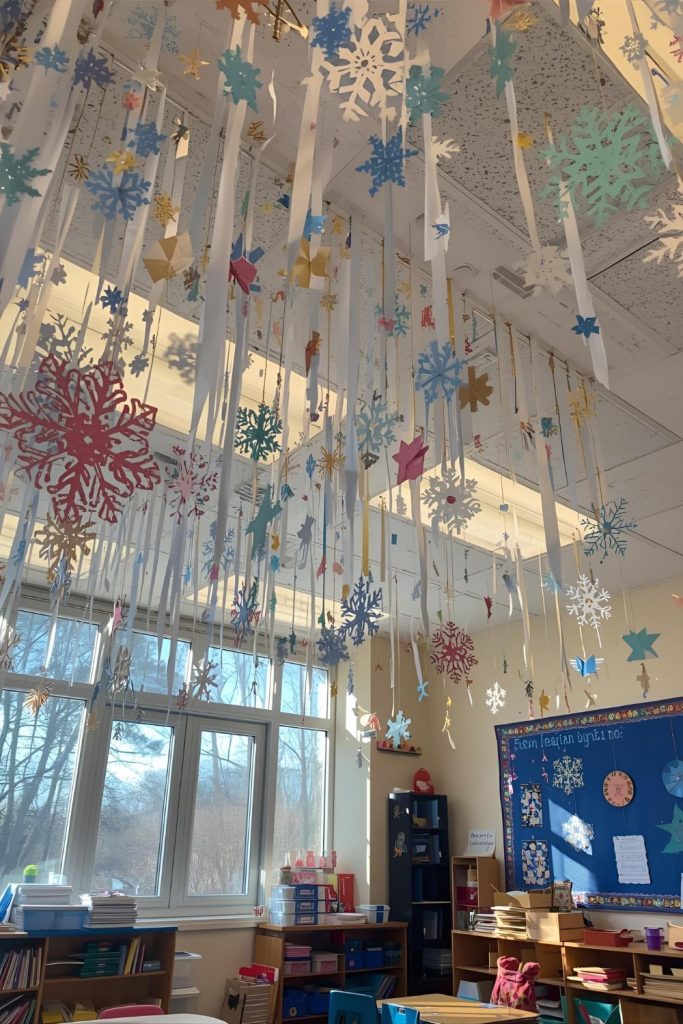
Frost-Painted Classroom Windows
Frost-paint effects on windows bring a seasonal touch while letting students practice artistic skills. They can paint snow patterns or icy textures on glass with safe paint. This makes the classroom visually cozy and bright during winter days, encouraging creativity.

Penguin Parade Wall Display
A wall filled with paper penguins, each labeled with student names or facts, creates a playful thematic display. Students can decorate penguins individually, enhancing ownership. The display can also serve as a springboard for lessons on habitats, adaptation, or winter animals.
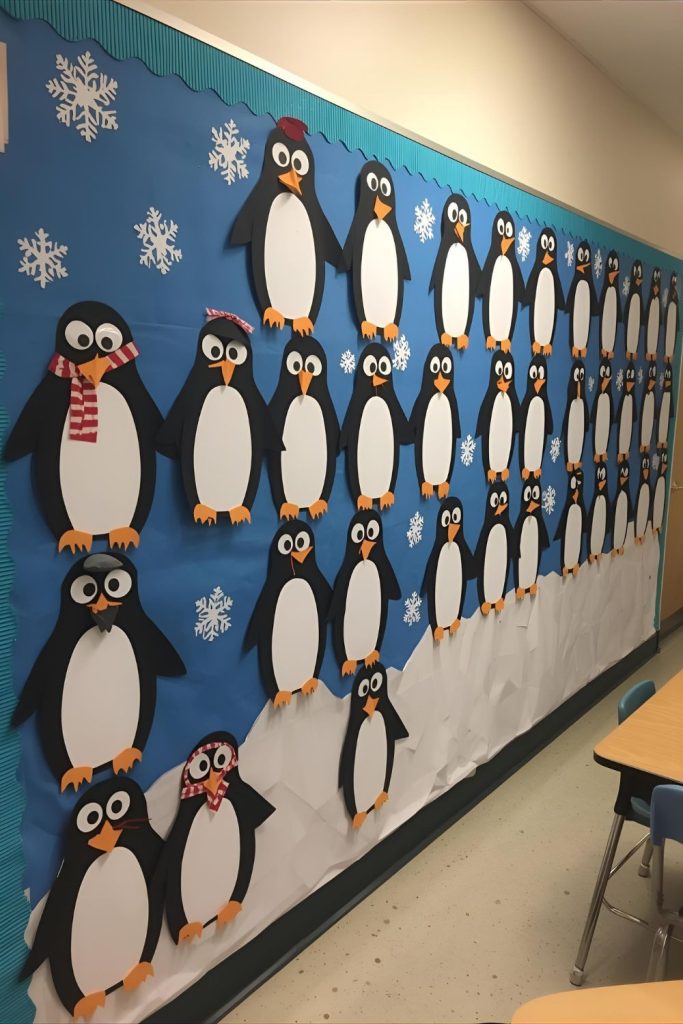
Icicle Window Chain
Paper icicle chains hung along windows bring winter indoors. Students can design and color each link. It’s simple, low-cost, and adds festive decoration while improving fine motor skills and coordination during the creation process.

3D Paper Mug Garland
Using cutouts of paper mugs with winter designs, you can string a garland across the classroom. Students decorate mugs with patterns, names, or seasonal messages. This interactive decoration is functional for aesthetic purposes and encourages expression.

Igloo Entrance Tunnel Made of Cardboard Bricks
Create an igloo-style tunnel at the classroom entrance using stacked cardboard blocks. Students can paint bricks white or add snow textures. This sets a playful winter tone from the moment they enter and inspires imaginative play.
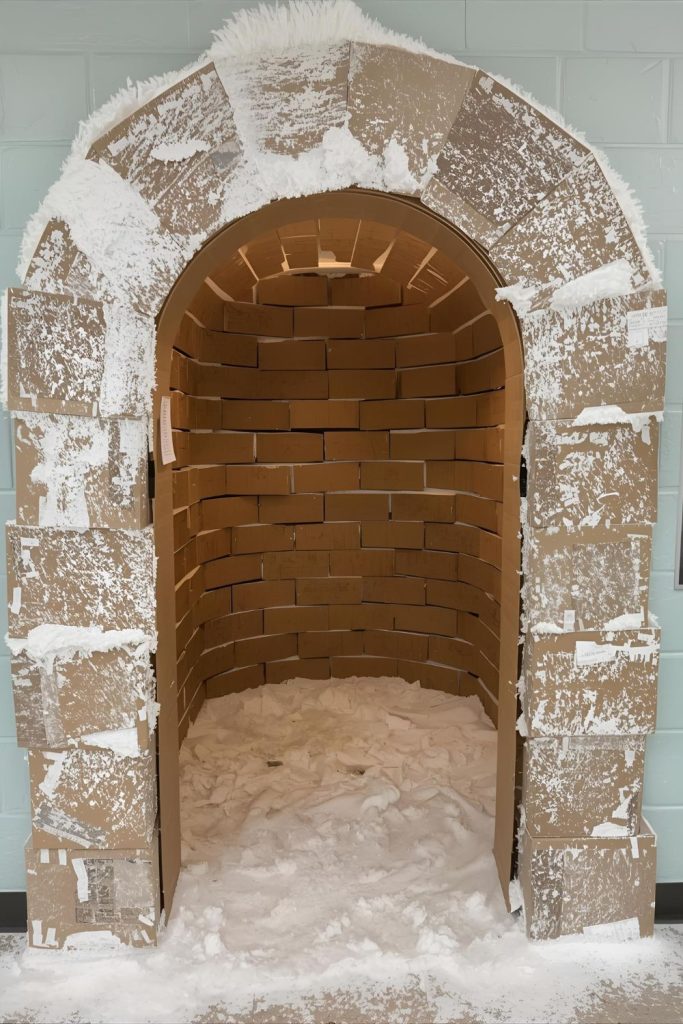
Snowman Self-Portrait Wall
Students create snowmen with their faces or characteristics integrated. This activity promotes creativity, personal expression, and humor. A wall of snowmen shows diversity while adding a cheerful visual element to the classroom.
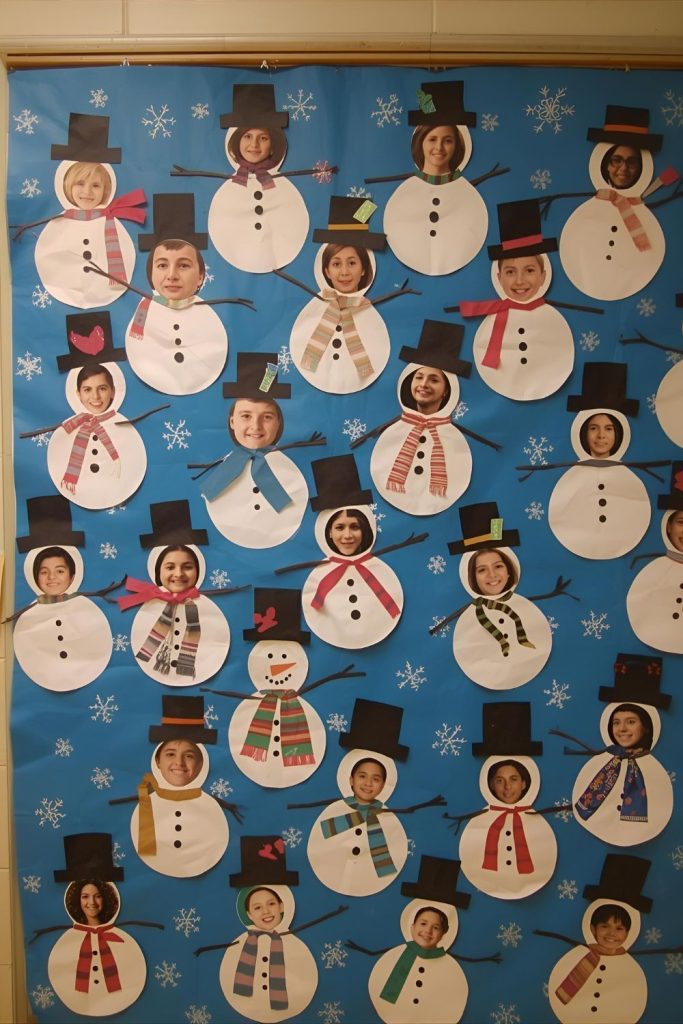
Kindness Blizzard Snowflake Board
Each student writes kind actions or compliments on a snowflake, which are then displayed collectively. This interactive display encourages empathy, teamwork, and positivity in a visual, engaging way.
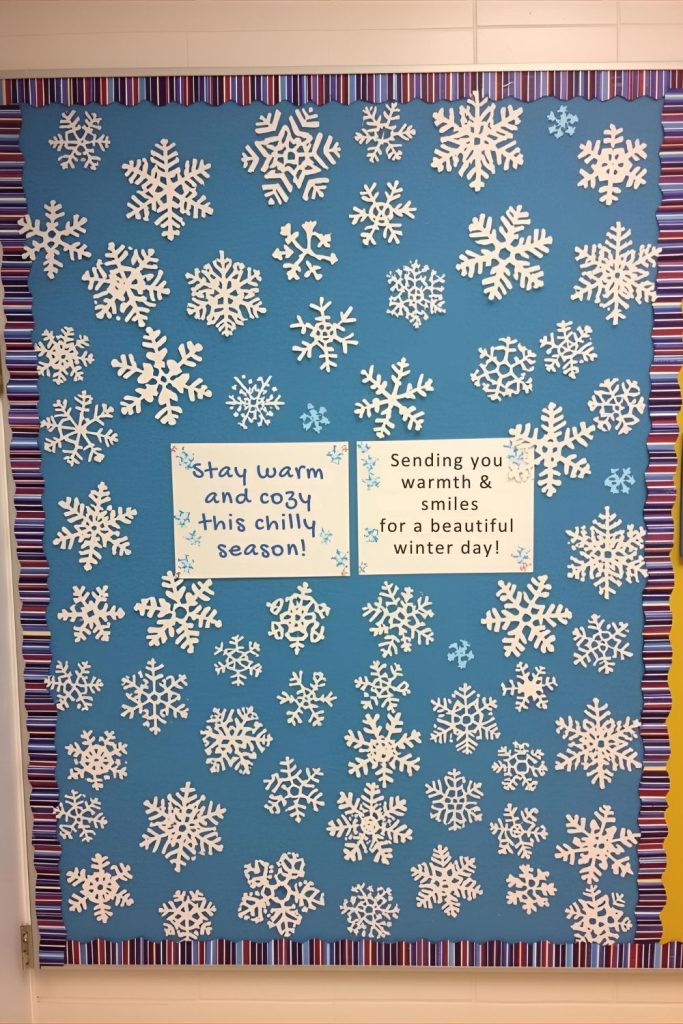
Mini Winter Terrarium Shelf
Small winter-themed terrariums with artificial snow, tiny trees, or animals can be displayed on a shelf. Students can assemble them in groups, enhancing observation, creativity, and classroom decoration simultaneously.
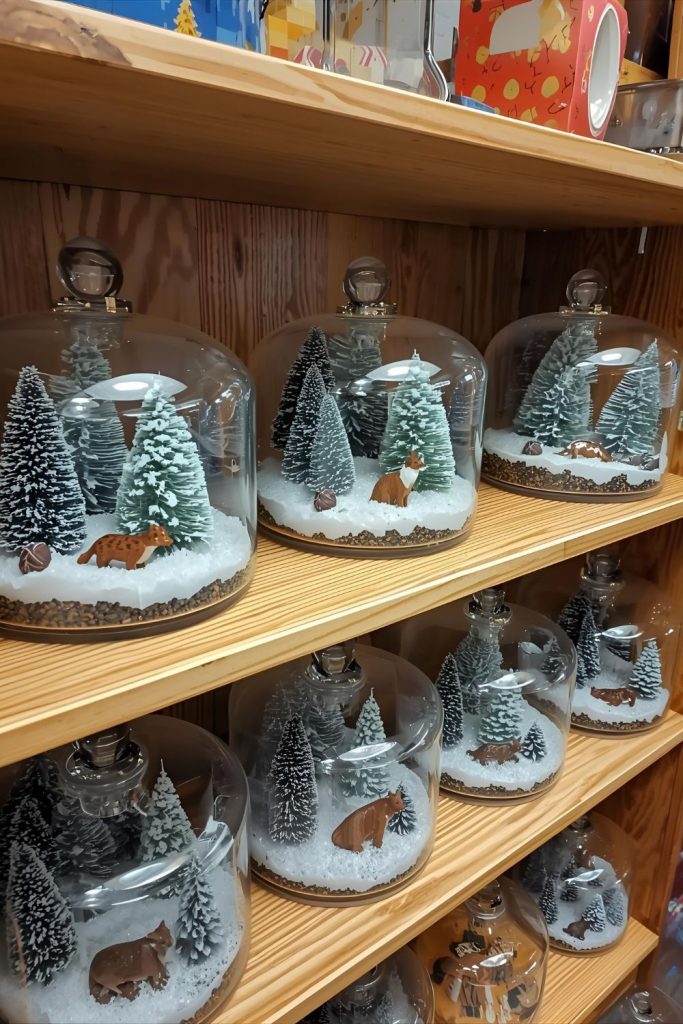
Marshmallow Ice Castle STEM Display
Students build miniature ice castles using marshmallows and toothpicks. This hands-on activity doubles as STEM learning, teaching construction, geometry, and problem-solving while providing a fun, edible decorative element.

Paper Snowball Word Wall
A wall of paper snowballs can hold vocabulary words, math terms, or science facts. Students add or remove snowballs during lessons, making it interactive. It blends decor with academic reinforcement seamlessly.
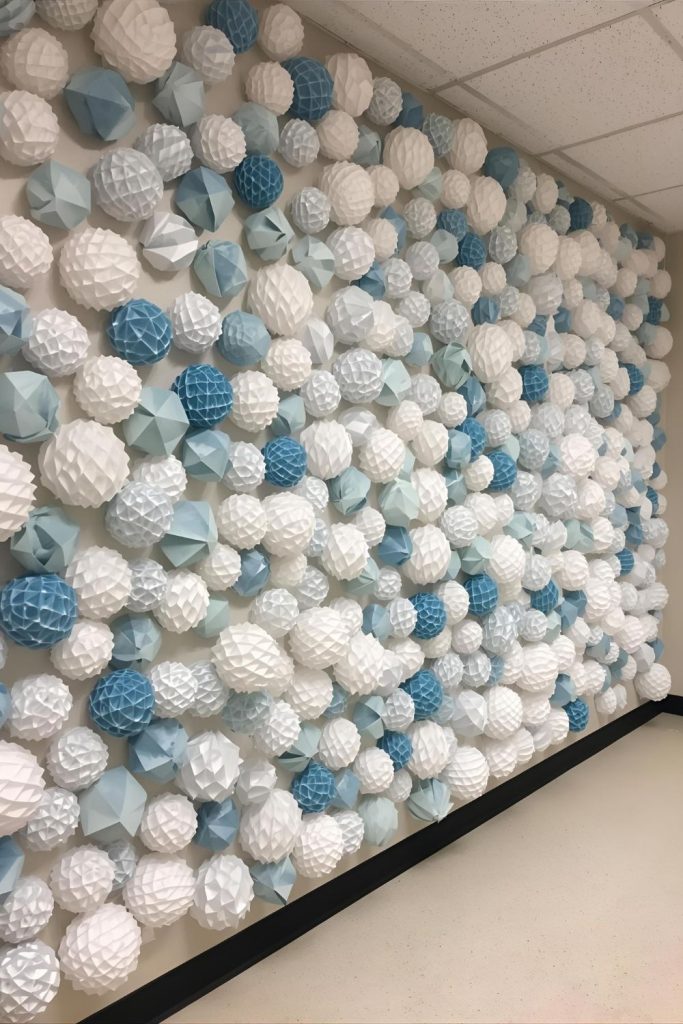
Paper Fireplace Corner with Battery Candles
Create a cozy corner using paper or cardboard to simulate a fireplace. Battery candles can safely add a warm glow. Students can read, share stories, or engage in calm activities in this winter-themed area.
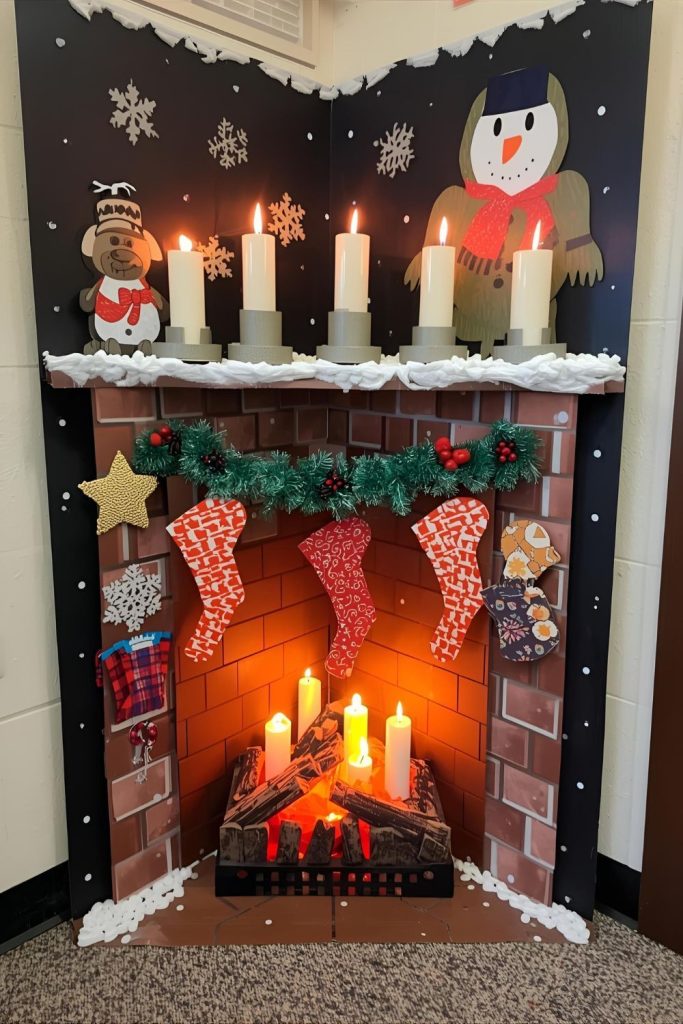
Winter Hat Craft Display
Students decorate paper hats to display on a wall or board. This simple decoration allows individuality and promotes seasonal creativity. It also serves as a cheerful visual across the classroom.
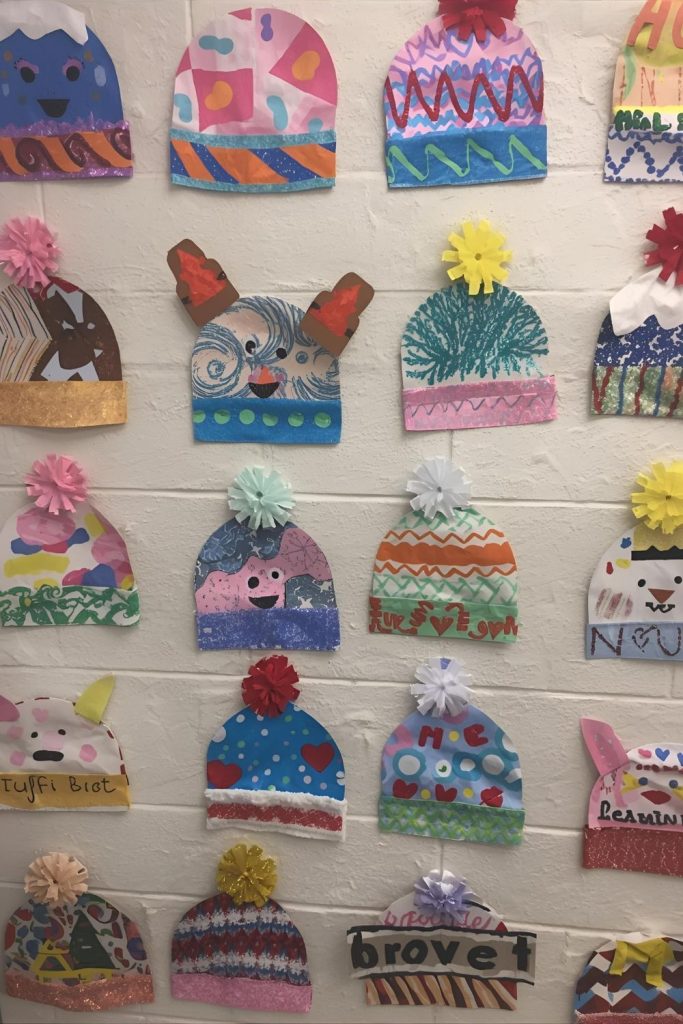
Winter Science Lab Corner with Icicle Streamers
A corner with science-themed winter displays, like frozen water experiments or icicle models, can integrate decoration with learning. Students can rotate experiments to maintain interest and observation skills.
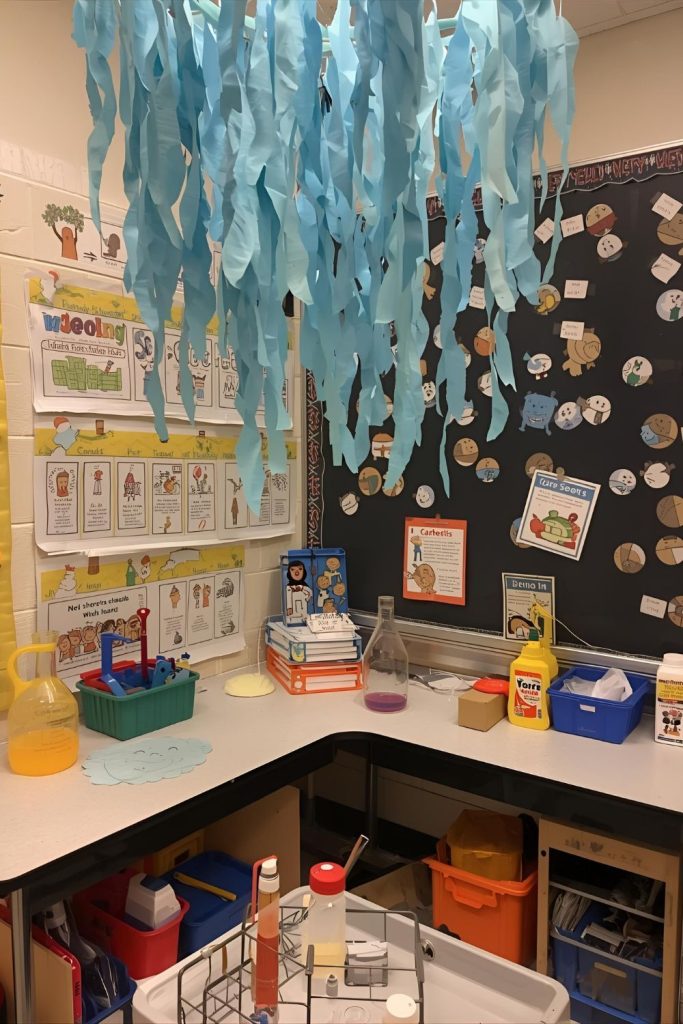
Paper Snowflake Goal Tree
A tree-shaped display where each snowflake lists a student goal. Students add or update snowflakes, combining visual appeal with personal reflection and motivation.

Snowy Village Diorama Display
Students create a small winter village with paper, cotton, and figurines. The diorama promotes creativity, teamwork, and storytelling while brightening classroom corners.
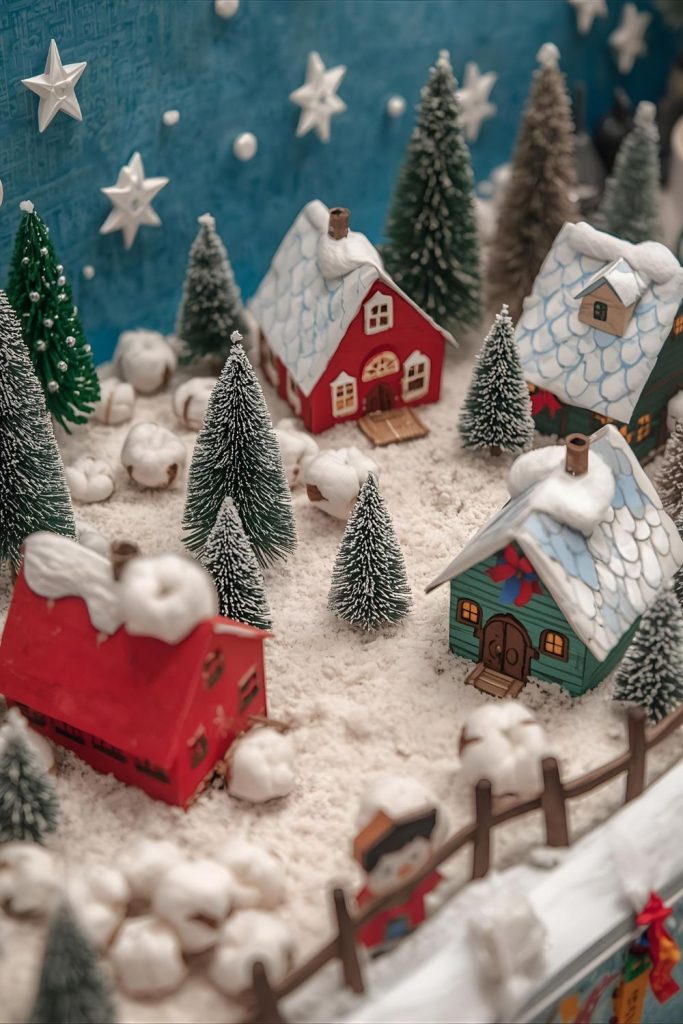
Polar Bear Fact Wall with Cotton Ice
A polar bear display made with cotton for ice and student-researched facts encourages learning about arctic animals. Students interact with and add content, merging decor with education.
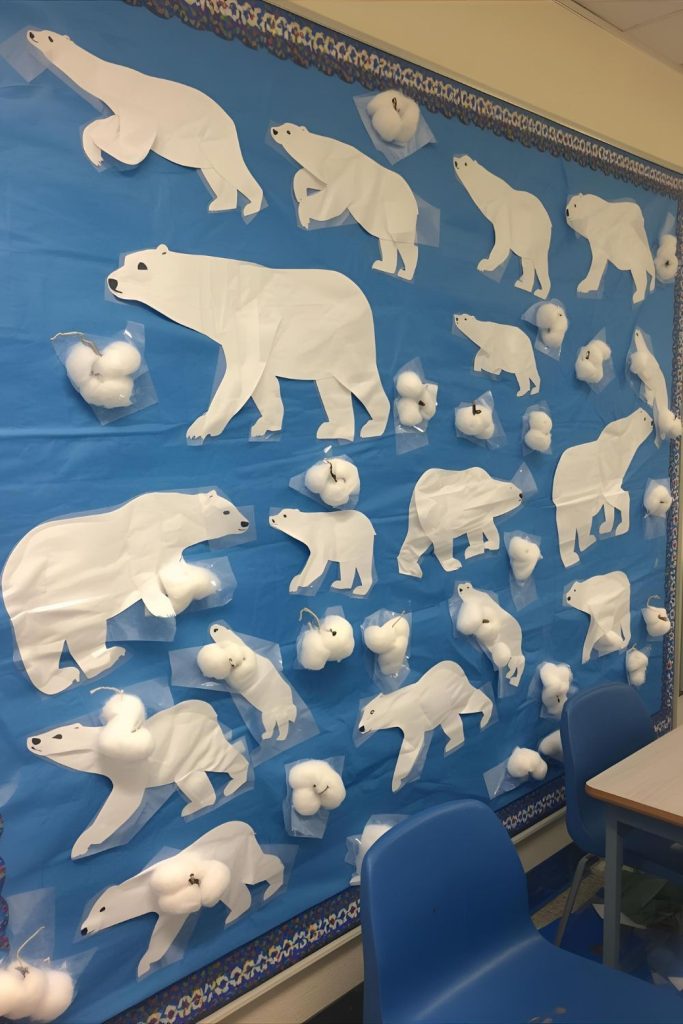
Winter Poetry Snowflake Wall
Snowflakes feature short poems written by students. This display encourages literacy, creativity, and seasonal cheer while providing an interactive, visually appealing element.
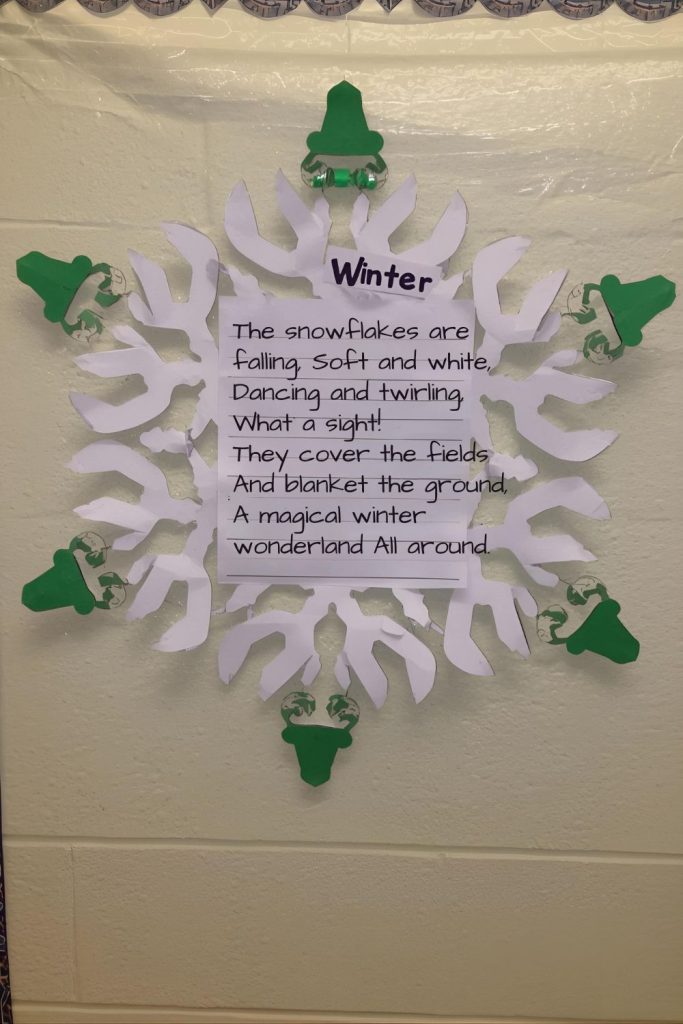
Snowflake Compliment Chain
Students write compliments or positive messages on paper snowflakes connected into a chain. This promotes kindness, social interaction, and a bright visual centerpiece.
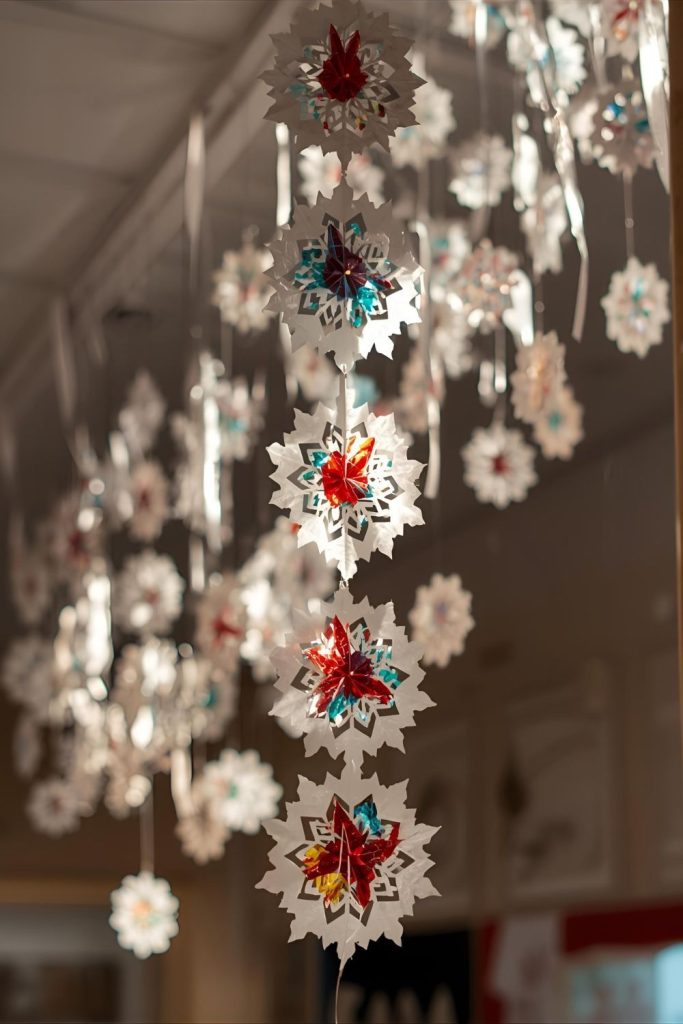
Arctic Animal Tracks Path on the Floor
Using footprints or paw prints cut from paper, create a path around the classroom. Students can follow the tracks, learning about animals while enjoying a playful and seasonal decoration.
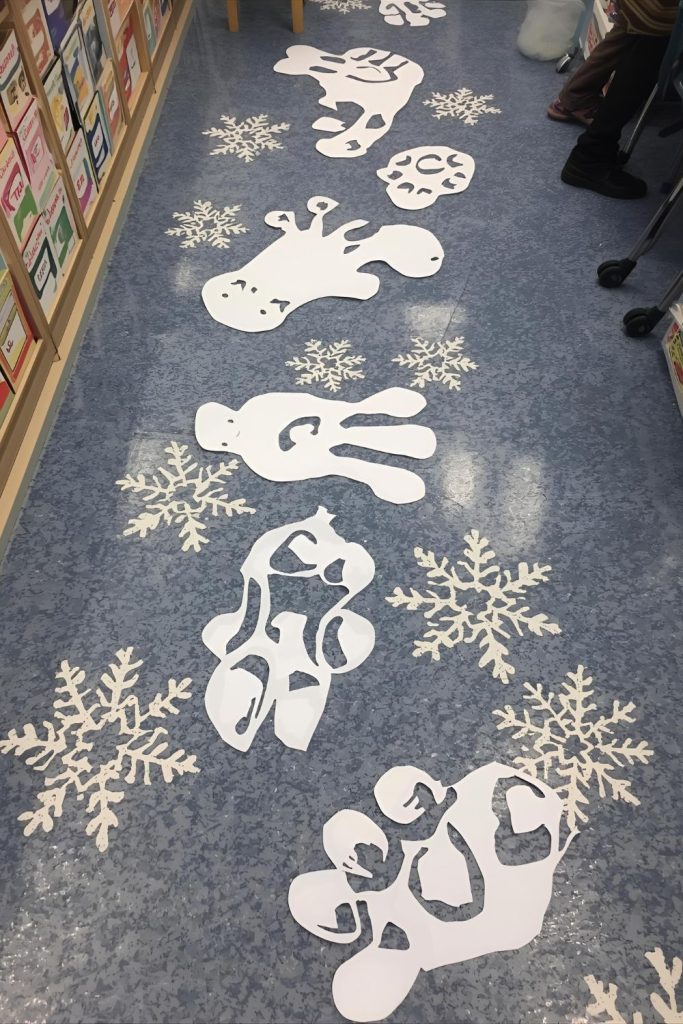
Student-Crafted Winter Forest
Miniature trees and snow-covered paper structures arranged like a forest, forming a cozy winter-themed corner or shelf display.
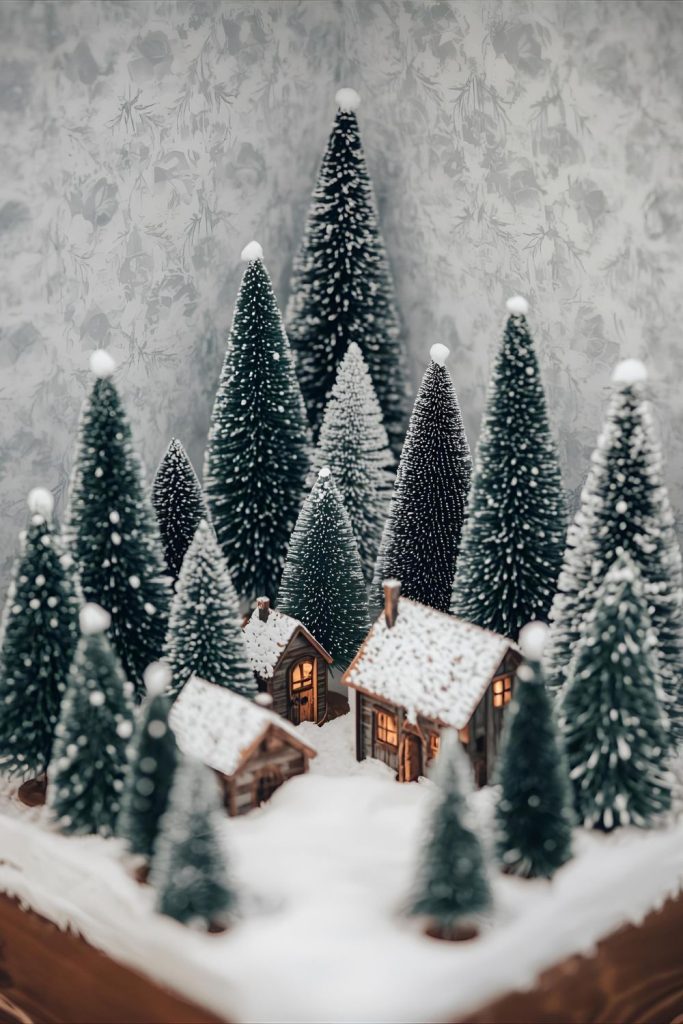
Frozen Lake Reflection Display
A section of the classroom floor or table transformed to look like a frozen lake using reflective materials, surrounded by paper snowbanks, miniature winter trees, and small winter animal figures, creating a sparkling winter scene.

Winter Animal Habitat Dioramas
Students design small habitats for winter animals using paper, cardboard, or other materials. This hands-on display reinforces biology and seasonal learning.

Winter Storytelling Chair Corner
A dedicated chair with seasonal decorations for storytelling sessions. Students can read aloud or perform skits, making the corner both educational and decorative.

Winter Scene Hanging Mobiles
Mobiles with winter scenes or snowflakes hang from the ceiling, adding movement and visual interest. Students can help craft each piece, connecting art with classroom decoration.
